Your guide to construction
This page is a brief overview of what you can expect to see happen now we've moved into construction.

What's happening at the moment?
We began construction on 12 December 2023. Now this has begun, there will involve be changes to the landscape that will be visible from the Black Cat roundabout and along the A428 in the places where the new route crosses the current road.
There will be periods of disruption and speed restrictions along the existing roads. These restrictions are necessary for everyone’s safety, and can lead to traffic flowing more smoothly.
See our fly-through video to get an idea of how the road will look when improvements are finished.
Click on the areas you want to find out more about below.

[Image: Digital representation of how the Black Cat junction will look]
What's happening at the Black Cat
- The Black Cat roundabout will remain open throughout construction, with some disruption. Any road closures will take place for limited periods, and there will be a 40mph limit through Black Cat roundabout during the build. You will see extensive work going on over time while we create the new A1 route beneath the A421/new dual carriageway.
- To begin with we will start clearing vegetation areas around the Black Cat to make way for the construction of the new junction.
- Demolition of the Travelodge and Shell services will make space for the new A421/A1 northbound slip road. On the southbound side of the A1, demolition of the commercial properties between the Great North Road and Black Cat roundabout.
Traffic management at Black Cat will involve
- 40mph speed limit on A1 northbound and southbound approaches to Black Cat roundabout and on A421 eastbound.
- Narrow lanes through the roadwork section.
- A satellite construction compound will be located just off the Black Cat roundabout using the existing quarry access. This compound serves the construction of the new junction at Black Cat.
How the Black Cat junction will work when finished
- Once the new dual carriageway is built the new three tier junction at the Black Cat roundabout will allow traffic to flow freely on the A1 by travelling under the junction.
- The A421 will cross over the A1 on a bridge, elevated above ground and continue to Caxton Gibbet.
- The connections between the A1 and A421 remain at ground level.
- The A1 will pass in a cutting beneath the A421 and the connections.
The Black Cat structure
The Black Cat itself is spending the next three years or so ‘resting’ in a secure location not far from its usual home. It will be well cared for by an experienced team of cat-lovers until it can return to a new vantage point.
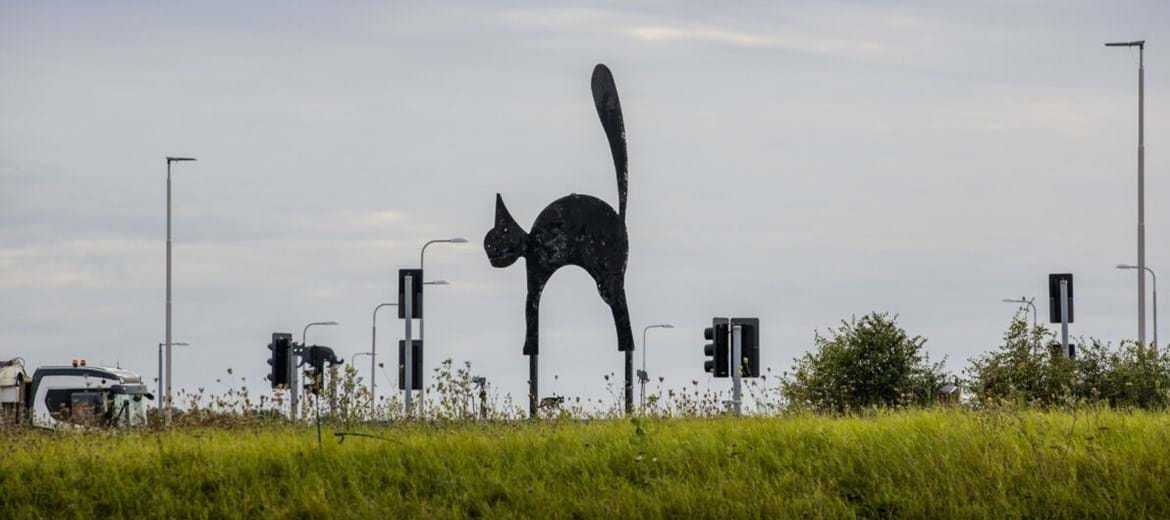
[Image: the Black Cat structure]
The existing Roxton Road bridge over the A421 will remain in use while we build a new bridge alongside it. The new bridge will have higher railings on the footway side, to make it even safer to cross using the footway.
When the new Roxton Road bridge, and all the new link road connections are complete and ready for traffic, the following junctions with the A1 will be closed to vehicles permanently:
- A1 and The Lane
- A1 and Nagshead Lane
- A1 and Chawston Lane
- Pedestrians will be able to use the footway on the northbound side of the A1 to the bus stop.
The Stagecoach East A1 bus stops northbound and southbound will be relocated and remain in these new positions for the duration of the roadworks at Black Cat. Stagecoach will update the bus timetable with any changes and post latest information at the stops nearer the time.
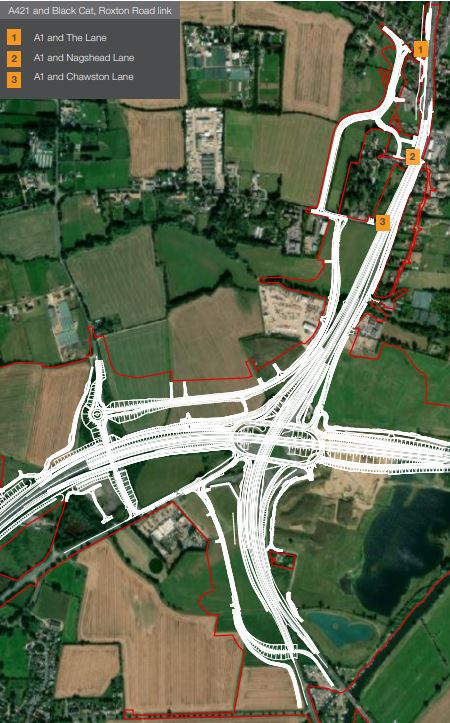
[Image: New junction location]
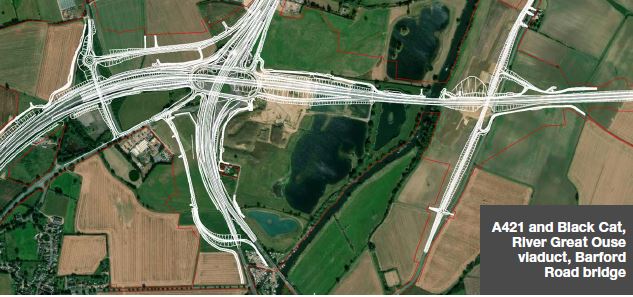
[Image: A421 and Black Cat]
New crossings will be constructed to allow the new dual carriageway to cross the River Great Ouse, East Coast Main Line railway, Barford Road, B1046/Potton Road, Toseland Road and the existing A428 at Eltisley. The high-pressure gas main will also be diverted.
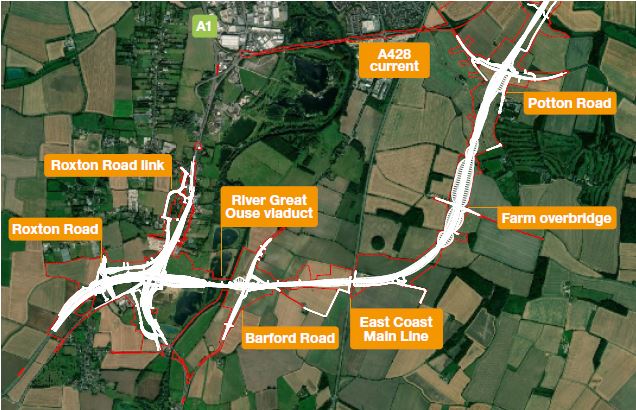
[Image: New crossings]
You may have seen our main construction compound being set-up ready for our office move. There will also be works on the Cambridge Road junction, Fox Brook culvert, Toseland Road overbridge structure and earthworks on both sides of Toseland Road along the line of the new road.
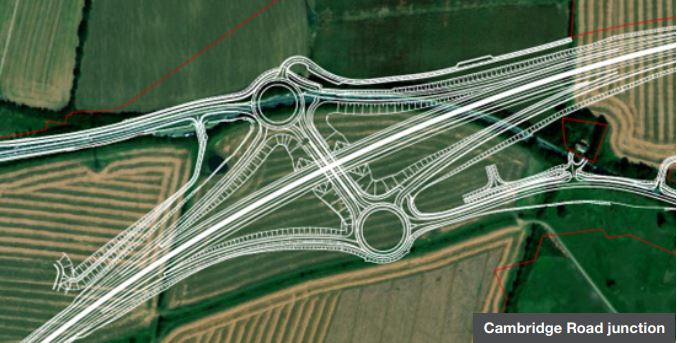
[Image: Cambridge Road junction]
The existing A428 will continue to run through the current Cambridge Road junction, while we build the new roundabouts and start the construction of the dual carriageway which will run in a cutting. As the roundabouts are built, traffic will use the new stretches of road until the new all-direction junction is complete.
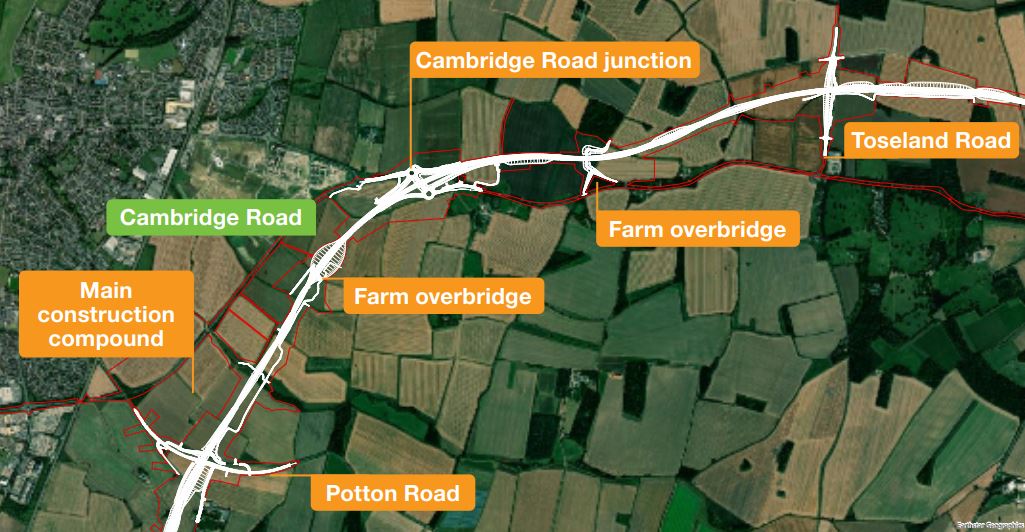
[Image: Potton Road to Toseland Road]
Potton Road and Toseland Road will cross the new dual carriageway on new bridges, and bridges will be provided for farmers to reach their land on both sides of the new road.
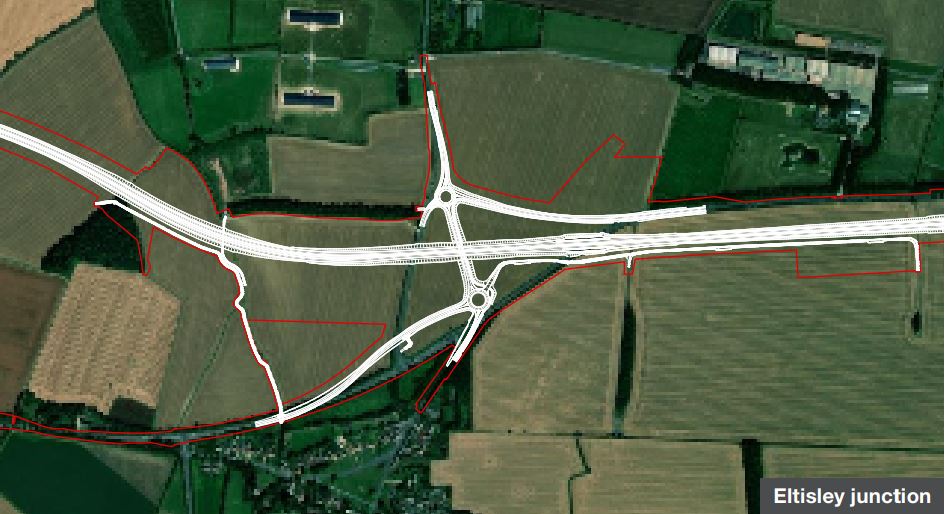
[Image: Eltisley junction]
The existing A428 will continue to run through the current junction at Eltisley, while we build the new roundabouts and start the construction of the dual carriageway which will run in a cutting. As the roundabouts are built, traffic will use the new stretches of road until the new all-direction junction is complete. Eltisley village will remain accessible throughout the build process, with some disruption as the new and old roads are tied-in and completed. We will keep the residents informed of progress and what to expect and minimise inconvenience as far as possible.
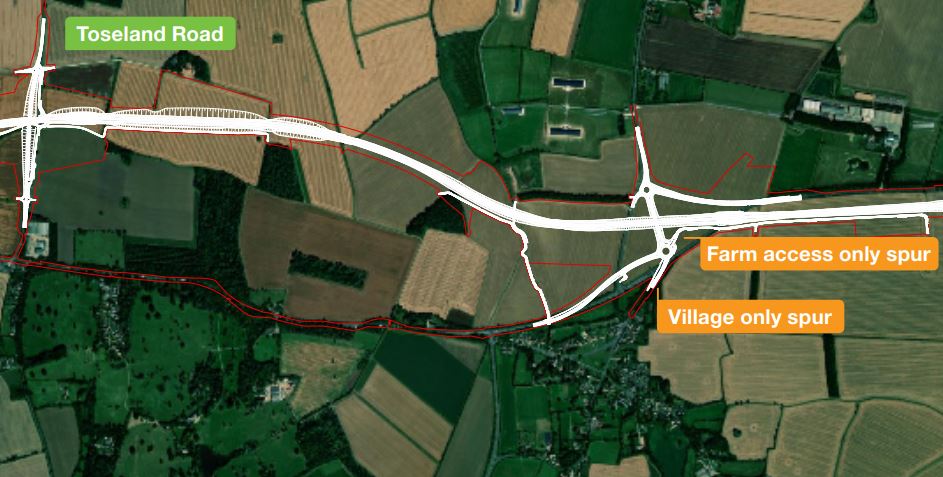
[Image: Toseland Road]
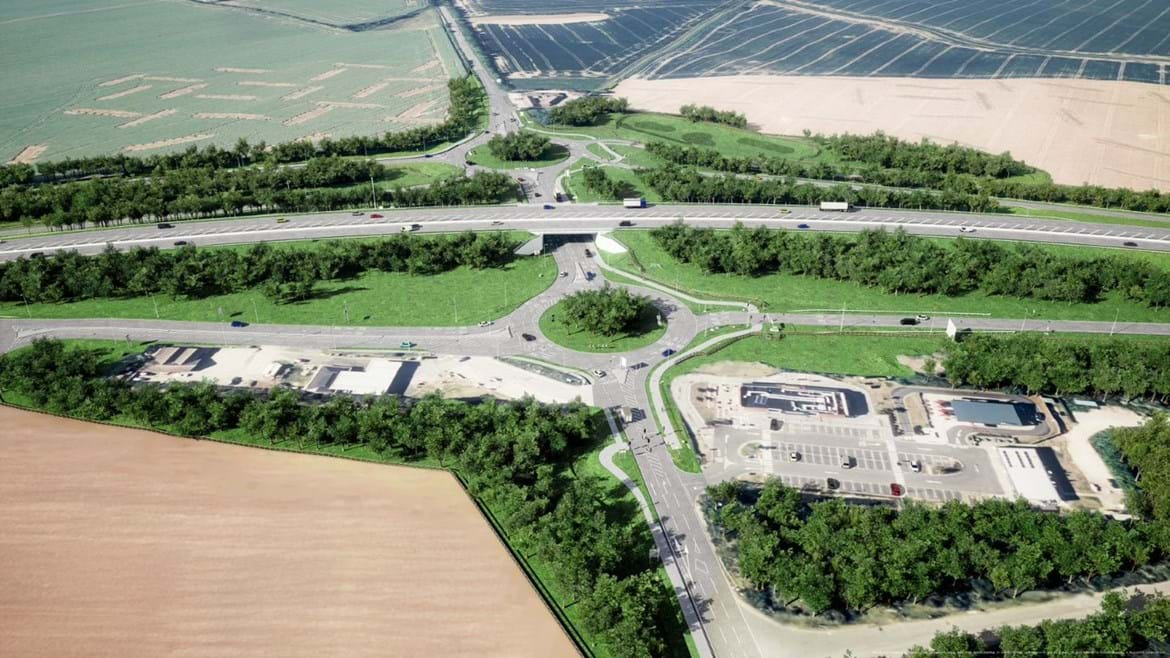
[Image: Digital representation of how the Caxton Gibbet junction will look]
The existing A428 will become the connection between the slip roads at the new Eltisley junction and the new Caxton Gibbet junction. This connection will have a cycleway which will separate cyclists from the mainline traffic, and link to crossing points at the new junction.
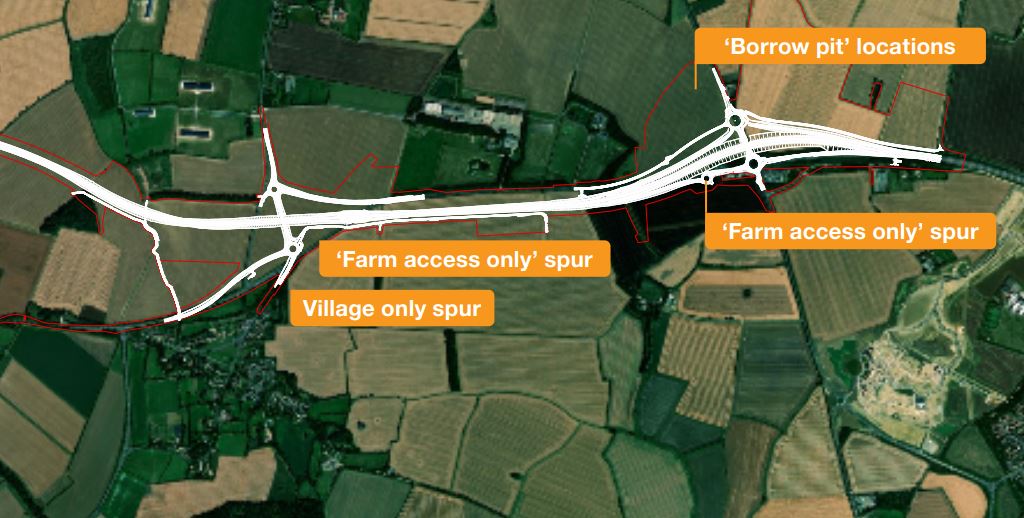
Borrow pits are areas of land where the construction team take soil to use in earthworks along the scheme. The topsoil and subsoil are stripped and stored around the edge of the field. The soil taken is replaced by soil taken from the cuttings elsewhere on the scheme. When the ‘pit’ has been refilled, its original subsoil and topsoil is replaced and the ground returned to its original level, and can be returned to use.
Sign up for updates
Keep updated on the A428 Black Cat to Caxton Gibbet improvements
Sign up for updates